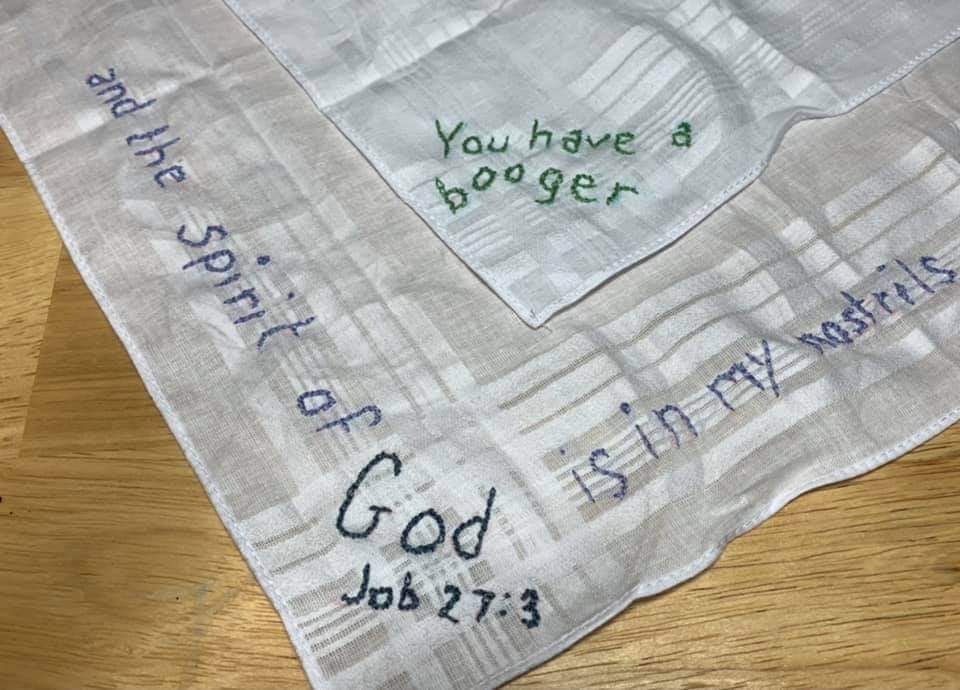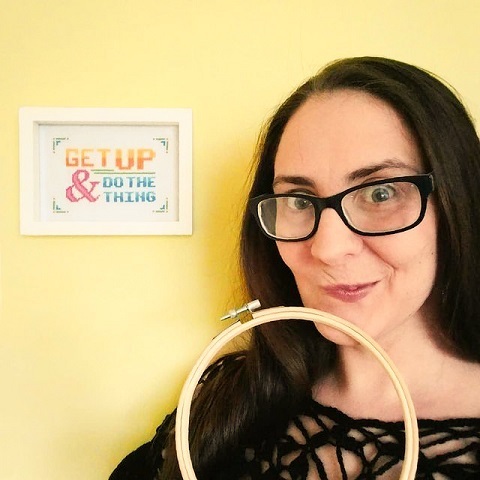I did not realize when I downloaded this new pattern that it is larger than the widest loop that I have (I realize this is my own fault for not reading the description closely enough). Is it ok to clamp the loop down onto parts I’ve already stitched so I can work on the next part of the pattern or will this mess up the stitches?
That’s no issue at all! Look at this:

You can clearly see loop marks but when finished
 you don’t notice it at all! This is even without iron / wash.
you don’t notice it at all! This is even without iron / wash.I’ve worked with small loops on huge patterns without issues.
That’s good to know! The pattern I’m making is way less detailed and delicate looking than this one so now I feel much better about it!
You’d want to try it on something you don’t care about to be sure, but I think it is something people do. I’ve done it on practice pieces before, but since I didn’t care about the outcome, I don’t remember how well it went. Probably if it was terrible I would remember, but that’s not very helpful, lol.
It would depend on exactly what kind of stitches you were clamping, though. Something flat done in a relatively fine gauge is going to do a lot better than something with surface action, like French knots, and I wouldn’t do it at all on beadwork. You’ll also want to be careful how tight you pull the area, and how tight you make it, but I’m sure you don’t need me to tell you that, lol.
Personally, I would use your situation as an opportunity to buy a bigger hoop or frame, but if that’s not an option, I would try clamping on existing work. I mean, I have, so…
My only worry with getting a bigger hoop is that it might get difficult to maneuver around. I thought this 9" hoop would work but the pattern ended up being almost 15" when using 14 count Aida. I think I’ll take your advice and test it on a small part of the pattern I can easily repair if it gets messed up. Thankfully this is just regular stitches so no beads or knots or anything!
Thanks for your quick response!
I hope it works out! I’m always happy to talk stitching.
And yeah, I guess 15 would be pretty big. I think the endgame for big projects is a frame that has a chair in front of it, like a loom or a small desk, so you’re not juggling the hoop in one hand, and the needle in the other. I don’t have the level of commitment to a single piece for anything that size, so I don’t even have to worry about how I can’t afford it, lol.
I finished about 25% of it before I started realizing this might be a problem so I feel too invested in it to quit now lol
Haha, I’ve been there: “This project has suddenly become way slower and more difficult than expected. Should I stop and try something else? …never! Full speed ahead!”
You’ve already had some good advice there but one extra trick is to cut up some cheap felt and put it in between your stitches and the hoop/frame. Just helps protect things a bit more, especially if it’s a wooden hoop that might splinter and catch on your stitches.
Sometimes doing what you’re about to do can sort of flatten the stitches down more where the hoop was, but they tend to fluff back up at the end when you wash the finished piece.
(and yes I’m taking like everyone always washes their finished stitch but don’t worry if you don’t, I often don’t bother either, only if it seems needed!)
I think I have a little bit of felt left over from another project so I will try that!


